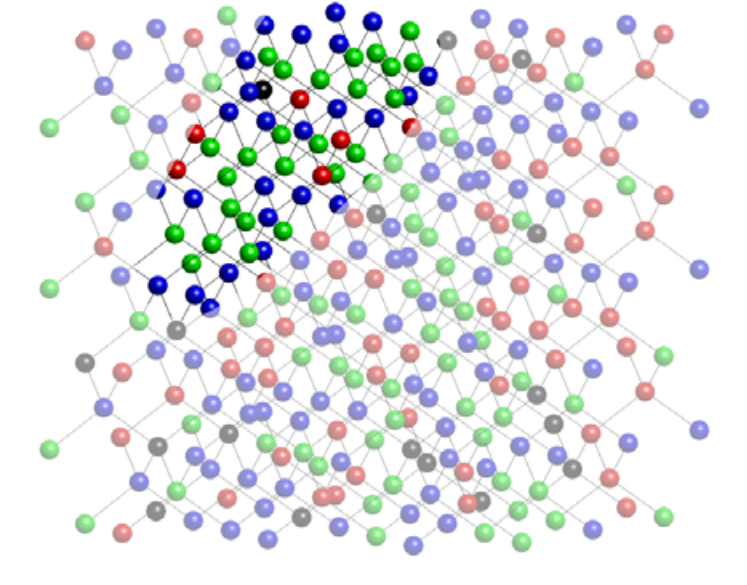Their analysis has been presented in Physical Review Letters.
LiGa0.95In0.05Cr4O8 is one of the new so-called “breathing" pyrochlore materials, chromate spinel materials with a distorted lattice structure that gives rise to unusual magnetic effects. For example, the breathing pyrochlores are thought to host unusual topological spin excitations called Weyl magnons.
Whilst investigating one of these materials with a variety of techniques, an international team of researchers made the unexpected discovery that the low temperature behaviour of LiGa0.95In0.05Cr4O8 differs greatly from that of the rest of the breathing pyrochlore family, including its close relative LiGaCr4O8. In the undoped material, two complex transitions involving both the magnetism and the atomic structure were observed at low temperature.
However, Nuclear Magnetic Resonance (NMR) and specific heat measurements on LiGa0.95In0.05Cr4O8 showed that only one transition occurs, at 11 K. Subsequent investigation with powder synchrotron X-ray diffraction (SXRD) at PSI in Switzerland yielded the same atomic structure at both high and low temperatures, confirming that the transition is not a structural change.
Using powder neutron time-of-flight neutron diffraction (ND) on WISH, the researchers then showed that the magnetic part of the scattering remains broad upon cooling below the transition. This result rules out magnetic long-range order, where sharp diffraction peaks would be expected. The origin of the broad scattering was further explored using the Reverse Monte Carlo technique, which gave a result that corresponded well the scenario of a nematic transition – the magnetic analogue of the transition responsible for the unique properties of liquid crystals, used in electronic displays.

|
Real-spaceplot of a nematic Reverse Monte Carlo configuration at 1.5 K. The colours indicate different collinear spin arrangements in the nematic low temperature state. Reprinted figure with permission from R. Wawrzyńczak et al., American Physical Society, 119, 087201, 2017.] Copyright (2017) by the American Physical Society. DOI:10.1103/PhysRevLett.119.087201 |
The model which is thought to describe this behaviour is the so-called Bilinear Biquadratic Model (BBM). This is a generic model in solid state physics, with versions of it describing systems ranging from iron-based superconductors to cold atoms on surfaces. If the results above do describe a nematic transition, then it is the first ever seen in a magnetic-only system.
There are, however, some uncertainties regarding the BBM interpretation of the results. Existing theoretical simulations do not extend to the breathing pyrochlore lattice, and it is unclear what the breathing distortion does to the nematic transition.
LiGa0.95In0.05Cr4O8 is just one member in a larger family of materials, some of which can now be re-examined with this multi-probe approach to see if they exhibit the same behaviour. The approach used may also be applicable to other, similar, materials whose behaviour is currently not well-understood.
Further information
Wawrzyńczak R et al. Classical Spin Nematic Transition in LiGa0.95In0.05Cr4O8. Physical Review Letters 119 (8), 087201 (2017). DOI:10.1103/PhysRevLett.119.087201.
Learn more on the WISH instrument.
